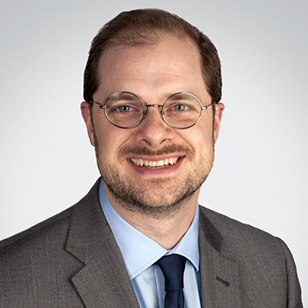
Jacob Nadal
Jacob Nadal has made a career of following his passions.
While working on his senior thesis as part of his undergraduate degree in music from the University of Puget sound, Nadal found himself spending a lot of time in the library building relationships with the reference and interlibrary loan librarians. Those friendships got him thinking about a career in libraries, a path that has allowed him to work with some of the rarest materials in the world.
A 2001 graduate from the Master of Library Science program at the then-School of Library and Information Science, now part of the Luddy School of Informatics, Computing, and Engineering, Nadal is currently the Director of Preservation at the U.S. Library of Congress. He will be hosting the fourth installment of the Luddy Virtual Summer Event Series Aug. 13 at 6 p.m. ET. Nadal’s presentation, “Cultural Institutions in the Age of COVID-19: Online, In Person, and in the Lab,” will outline the ways scientific and cultural heritage literacy intersect and how librarians are working with scientific data to plan the safe reopening of cultural institutions in the face of coronavirus.
Nadal arrived in Bloomington in 2000 to pursue graduate work both in musicology and library science, and he quickly gravitated to work in preservation.
“I got involved in this work through an early digital library project that was scanning some exceptionally fragile materials then creating both digital and print facsimiles,” Nadal says. “To do that well, we had to learn about historic and present-day book history and book construction, so my first experience of preservation was as a place where lots of disciplines come together. That appealed to me then, and it's still a guiding principle for me today.”
Following graduation, Nadal served as the first head of the E. Lingle Craig Preservation Laboratory at IU before working at the New York Public Library, the UCLA Library, and the Brooklyn Historical Society. He served as the executive director of the Research Collections and Preservation Consortium (ReCAP) in Princeton, N.J., which is jointly operated by Columbia University, The New York Public Library, and Princeton University.
In July 2017, he was appointed Director of Preservation at the Library of Congress where he is responsible for the work of the Directorate’s five Divisions — Binding and Collections Care, Collections Management, Conservation, Reformatting, and Research and Testing.
“I’d worked with the Library on several initiatives over the years, such as the National Digital Stewardship Residency and the Digital Preservation Outreach and Education Program, and had a few close colleagues who worked there over the years,” Nadal says. “When the position of director opened, I had a job I loved, and it was hard to step away from that. However, with Dr. Carla Hayden just beginning her tenure as the Librarian of Congress and a new leadership team coming together in the agency, it led me to think this would be an interesting moment at the Library of Congress. And, not to put too many stars and stripes on it, when you get that call, you say ‘yes.’ ”
Methods of preservation have changed dramatically since Nadal entered the workforce, shifts that have forced adjustments in both how the job is done and how it is conceived.
“Learning how to preserve digital information has been the real epoch-making challenge,” Nadal says. “That’s no surprise to anyone, but what is striking is how much we've learned about physical or analog information and what we call "artifactual value" now that we have an alternative universe of formats to compare with. There also has been a generational advance in our understanding of the relationship between collections and their storage environment, and that's a digital revolution, too. Now that we have digital sensors easily available and integrated into building automation systems, we can optimize environmental controls for longevity and costs outcomes together. This was almost pure theory when I graduated, and now it's mainstream practice.”
Developing relationships with the people who hold the items for preservation is critical, too.
“Preservation cares for things, but we need to stay engaged with the people who care about those things,” Nadal says. “Those acts of care are some of the most powerful things libraries, archives, and museums can do. We need to place that at the center of our strategic thinking. It guides how we collaborate and build meaningful, sustainable preservation programs at our own institutions, and through community, regional, national, and international partnerships.”
The ever-changing field keeps the job fresh, and Nadal encourages those who are entering the career to focus on finding a path that keeps them engaged.
“Skills matter, but any place you would want to work for is hiring for brains, personality and potential,” Nadal says. “The reverse is also true. Pay at least as much attention to who you will get to work with as the work you will be doing. While you're in school, it’s way more important to chase down the challenging ideas and complex problems, find some other people who are interested in them, and learn how to talk about the issues in your field. The details will sort themselves out, and often not in the way any of us expect.”
To learn more about Nadal and his work, register for his Luddy Virtual Summer Event presentation.

